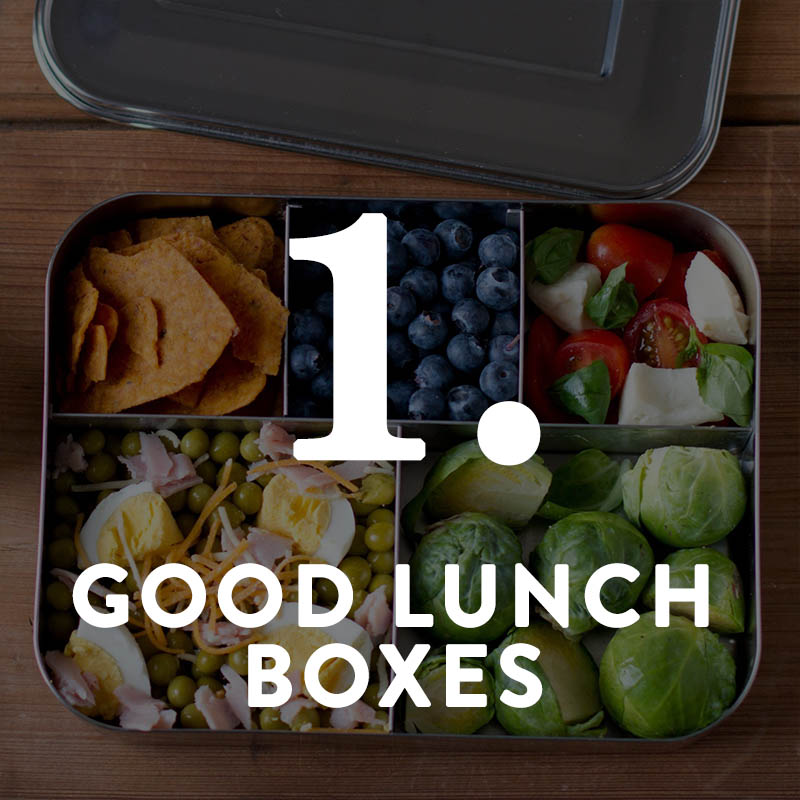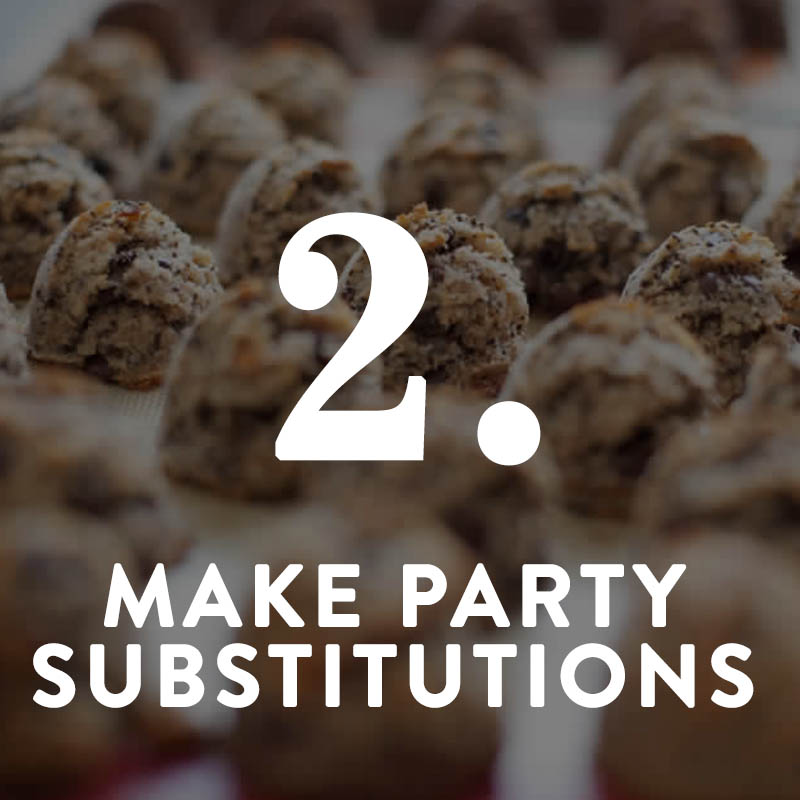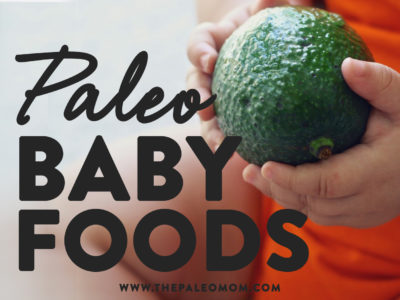About five years ago, I decided that I really wanted my family to join me on my Paleo journey. I had experienced such rapid success in my first few weeks of following a Paleo Diet that my husband agreed, albeit somewhat hesitantly, that this was something we should could all try together. Where I jumped in with both feet, my husband and girls (just about 2 and 5 years old at the time) transitioned slowly over about six months. Where I was a near-instant zealot, they slowly came to realize the health benefits of this way of living and developed a sense of commitment to healthy eating over time. And while we rarely use the word “Paleo” to describe how we eat, focusing on real, whole, nutrient-dense meals has been an incredibly powerful way to improve our family’s health.
Table of Contents[Hide][Show]
Paleo families do face some unique challenges compared to other demographics. And, many solutions are specific to each family’s priorities and the details of the balance that must be struck in order to make the Paleo lifestyle within the family unit both tenable and sustainable. But (thankfully!), there’s also some aspects of this challenge that are generalizable. So, if you’re interested in setting yourself and your family up for a successful Paleo journey, these 4 must-haves belong in your routine!

1. Good lunch boxes
Have you ever seen a school lunch? Most public schools in the U.S. don’t serve food of the same quality, nutrient density or even palatability that we can create in our own kitchens. The same goes for most adult lunch options! Knowing that we can feed our kids (and ourselves!) yummy and healthy foods even when we aren’t home is incredibly empowering. Don’t be intimidated by the idea of packing a Paleo lunch for your kids, your spouse or yourself (see 4 Back To School Basics for Paleo Families). Keep things simple, and start out with a great lunch box!
Save 80% Off the Foundations of Health
Expand your health knowledge on a wide range of topics relevant to you, from how to evaluate scientific studies, to therapeutic diet and lifestyle, to leaky gut and gut microbiome health, to sustainable weight loss, and much more!!!

I love PlanetBox and LunchBots! They’re sleek enough to be used by older kids and adults, but my elementary-aged girls love them as well. Plus, the individual containers or sections help separate foods. That’s great for picky eaters, but also a plus when you’re including more real foods in your meals (since they typically don’t come in convenient packaging). In terms of what I actually pack, I generally leave that (somewhat) up to my kids (see Lunchbox Ideas for Back To School and Getting Ready for School: lunches, snacks and beyond!)
Once we employ a little imagination, coming up with lunch components is actually pretty simple! I try to include protein, fat, carbs and veggies, just as I would at home. For protein, I love natural uncured grass-fed hotdogs and other clean lunch meat (an easy way to sneak in organ meat if you buy from US Wellness Meats), summer sausage from GrassFed Traditions, canned salmon, smoked salmon, cold leftover scrambled eggs (try my Oven-Scrambled Eggs), my Green Eggs or hard boiled eggs. I like sweet potato chips, potato, or plantain chips, fresh or dried fruit for carbs and nuts, coconut, olives or even cold bacon for fat sources. For adults, a salad with dressing on the side, plenty of protein, and a piece of fruit is a great solution!
If you’re looking for more on-the-go snacks, my ThePaleoMom AIP Survival Pack from Barefoot Provisions and my AIP Made Easy Box from One Stop Paleo Shop are a great way to try a variety of snacks your family will love before settling on some favorites!
Those are just some of my ideas, but luckily, I have a couple friends who have put together amazing resources with even more imagination! Matt and Stacy at Paleo Parents are pros when it comes to packing Paleo kids lunches, and their e-book Paleo To Go is packed with recipes and ideas for little eaters. Charissa Talbot of No Cook Paleo is a cold-lunch expert, and her No-Cook Paleo Lunches is a fantastic source of e-inspiration, too!
 2. Make Party Substitutions
2. Make Party Substitutions
Birthday parties can create some real stress for Paleo families. It might seem like they’re tailor-made to make our kids’ healthier choices stand out—in a bad way. Avoid the cake? Forego the pizza? Really, is there an activity less conducive to healthy eating than a stereotypical child’s birthday party?
I know it can seem a little overwhelming, but with practice, we can navigate these social situations with grace and even fun. When my children are attending a friend’s birthday party, my favorite trick is to bring a treat my child does like to a party. This can be anything from my almond coconut bars to a Paleo cupcake I know they enjoy. I also rely on pre-made Paleo treats for parties at school or just during busy times— one of my favorite clean treats is Rickaroons, individually packaged and non-perishable!
Although kids are doing most of the partying, their experience might be dictated by how well adults communicate. So, I make sure to let the host know that my child has special dietary needs, but that I’ll provide for them and don’t expect the host to take time out of a busy day to accommodate my kids. Chances are, if you and the host don’t make a big deal out of these choices, the kids won’t either!
If you’re throwing the party, you can think of this as a time to help your kids’ friends understand that your family’s Paleo lifestyle is NOT synonymous with deprivation. That might mean cooking a special recipe for Paleo cake, or it might just mean ordering from a gluten-free bakery. It could also mean throwing a party that doesn’t revolve around food!
 3. Create New Holiday Traditions
3. Create New Holiday Traditions
In the US, food-centered holidays are the norm. Easter baskets are filled with sugary candy. Christmas stockings aren’t complete without a treat. And don’t even get me started on Halloween! Sugary snacks, and the ensuing sugar crashes, have almost become part of our expectation during these holidays. But what if we created new family traditions?
Over the last few years, I’ve worked pretty hard to move my family traditions away from food and toward more meaningful experiences. Of course, we still enjoy Thanksgiving, Christmas and special birthday dinners…but I consider those full and healthy meals! What I’m talking about is the sugary spiral that seems to surround holidays. We avoid this by replacing food-centered traditions with other things that still feel special.
At Easter, my daughters search for plastic eggs filled with Lego pieces that they can put together once they’ve found the whole batch. For Hallowe’en, we go trick-or-treating (because getting dressed up and showing off our costumes to the neighbors is just too much fun!) buy my girls donate all the candy they collect to the troops in exchange for a new toy or book. At Christmas, we’re more focused on toys (and boring stuff like new clothes) than treats. And when there’s treats provided at school celebrations around these holidays, I have a good discussion with my daughters about how candy makes them feel (my oldest reacts poorly to artificial dyes), and offer an alternative. Kids are sophisticated enough to understand what makes them feel well, and in general, I find it’s better to explain to my children why we’re making these decisions about our health and wellbeing surrounding food. When we’re all on the same page, everything is easier!
Of course, there are times when what our children eat is out of our control. School, camp or sports might put meals in the hands of another adult. I find that in these situations, open lines of communication are our best friend! I try to educate my children about what they can and can’t eat so they can advocate for themselves, with an air to understanding that once in a while something that isn’t as healthy as we have at home is okay. Both my girls are overtly gluten sensitive so this discussion involves them understanding how to say that they can’t eat gluten-containing foods as well as have an idea of what kinds of foods gluten is typically in. On the flip side of this coin, I also try to discuss my kids’ dietary restrictions with their teachers and other caregivers at the beginning of every school year. This helps underscore the seriousness of our purpose, but it also lets the teacher (or coach, or camp counselor) know that we want to work with them, rather than create more work for them.
My daughters keep alternative treats, like very dark chocolate, in the classroom for times when the teacher provides candy as a reward. If students frequently bring in treats for holidays or their birthdays, it might be a good idea to send something like Rickaroons, Caveman Cookies, or another pre-packaged (and therefore shelf-stable) treat into the classroom. The teacher can hang on to these for the year, and your child will feel included in special treat times. And, just like I don’t give my kids food rewards for good behavior (or anything else!) at home, I try to work with teachers to find non-treat substitutes for rewards for my kids (last year, my oldest received “bonus bucks” in lieu of candy which she loved!).
Just like we don’t want to feel deprived, our children need to feel included, and it’s okay to have a treat every once in a while! At the same time, changing the paradigm around food rewards and treats is, I believe, an important project for us all.
 4. A Positive Attitude
4. A Positive Attitude
We all remember childhood—while it may seem like a relatively carefree time, we can help our kids by keeping in mind that it’s also a period when social acceptance and “fitting in” can be incredibly important to happiness. For that reason, my final “must-have” for Paleo families is a positive and supportive attitude all around! Whether your kids have been Paleo since birth or are making the transition along with you, chances are they may experience difficulties when eating differently from their peers. Whether that means they can’t order lunch at school, have to pack special treats that set them apart or become nervous at friends’ birthday parties, a positive and calm attitude can go a long way toward making sure everyone experiences the benefits of diet changes…without the unhelpful stress!
I think it’s important to talk to our children about why their choices might be different from their peers. Most children are happy to grasp onto explanations. I mean, really, have you ever dealt with a 5-year-old who wants to know why the sky is blue, why the moon can sometimes be seen during the day, why butterflies are called butterflies when they aren’t made from dairy, and why is it a different time at Nana’s and Gramma’s houses than it is here? LOL! However, timing this explanation is really important as well. Try to have it early and often, rather than in the heat of the moment when you and your child are frustrated, disappointed or wondering why a particular food or behavior is off-limits, and keep it at an age-appropriate level. When we first started, we talked about “food that hurt our tummies” (my oldest’s most prominent symptom of gluten-intolerance was stomach upset) and “foods that help us grow”. Now, we talk about the role of individual vitamins, minerals and our gut microbiome!
I also believe that we can help our kids by being flexible. This doesn’t mean allowing them to eat foods that provoke an immune response or an upset tummy. But it might mean individualizing our children’s diets the same way we individualize our own: through elimination and reintroduction. For instance, my daughters tolerate rice just fine. It’s not perfectly Paleo, but it’s a decent source of carbohydrate and a sneaky way to increase bone broth intake for my active kids. Plus, with the addition of other rice-based products like crackers, it helps them feel a little more “normal,” and I make sure it doesn’t mean they get to skip more nutrient-dense foods.
Above all, compassion and respect might be the biggest “must-haves” in a Paleo family’s arsenal. The transition to a new, healthier way of eating—at the expense of habits generated by the Standard American Diet—is a big ask for any family. And while we know it’s well worth it, it’s also worth remembering that each member of our families might take on change in a different way. Just hang in there. The results will speak for themselves!









